Olympus Has Fallen
by Tim
 Who said the West couldn’t make action games? True, when it comes to combat systems centred around hacking and slashing, Japan have always been in a league of their own, with Platinum Games’ Bayonetta and FromSoftware’s Souls series and, more recently, Bloodborne continuing to demonstrate the country’s unparalleled penchant for impeccable mechanics. But over the years games such as MercurySteam’s Castlevania: Lords Of Shadow, Ninja Theory’s DmC: Devil May Cry, and Sony Santa Monica Studio’s God Of War have shown that Japan’s western counterparts are learning the ropes. In fact, Sony Santa Monica created the original God Of War in part as a response to the allegations that the west couldn’t make such games, to prove that western developers were capable of competing in the genre. Now, a decade later, having birthed one of PlayStation’s most successful and influential franchises, spanning six console games and one mobile outing, few could disagree they achieved their goal.
Who said the West couldn’t make action games? True, when it comes to combat systems centred around hacking and slashing, Japan have always been in a league of their own, with Platinum Games’ Bayonetta and FromSoftware’s Souls series and, more recently, Bloodborne continuing to demonstrate the country’s unparalleled penchant for impeccable mechanics. But over the years games such as MercurySteam’s Castlevania: Lords Of Shadow, Ninja Theory’s DmC: Devil May Cry, and Sony Santa Monica Studio’s God Of War have shown that Japan’s western counterparts are learning the ropes. In fact, Sony Santa Monica created the original God Of War in part as a response to the allegations that the west couldn’t make such games, to prove that western developers were capable of competing in the genre. Now, a decade later, having birthed one of PlayStation’s most successful and influential franchises, spanning six console games and one mobile outing, few could disagree they achieved their goal.
Still, even with such an accomplishment, some consider it blasphemous to compare God Of War with the likes of Bayonetta, Ninja Gaiden and old-school Devil May Cry, and perhaps they’re right. Perhaps they’re also missing the point. Yes, it’s easy to label God Of War as a mindless button-masher (not that that’s necessarily a bad thing, or indeed quite the case), but let’s not forget that on its debut in 2005 it was celebrated as one of the first western-developed action games to truly capture the feel and essence of a Japanese hack and slasher, even if it was and always has been more about brutal spectacle than lengthy combos. The fluidity of Kratos’ movement, the satisfying thwack of his strikes, the rhythmic combos and responsive controls all added up to a game which, to some degree, could (and I must stress the word “could”) almost have been mistaken for the work of a Japanese developer.
But of course, God Of War didn’t come from the likes of Inafune, Kamiya or Itagaki. Instead, it came from the warped mind of Twisted Metal creator David Jaffe, who was keen to build a game based around his interest in ancient Greek mythology, a perfect fit for gaming it seemed. On a conceptual level, everything was more or less already in place: a bestiary of ancient beasties to battle, a range of godly magical powers to use against them, and a stunningly realised fantastical setting unlike anything yet seen in games for it all to play out across. All Sony Santa Monica needed was a story and a lead, and their epic Greek tragedy was ready to roll.
That story turned out to be a trilogy-spanning tale of good old-fashioned, blood-soaked revenge, as audacious antihero Kratos, aka the Ghost of Sparta, sought ultraviolent vengeance against the Olympian Gods who’d wronged him, amongst other things. Minotaurs, Cyclopses, and legions of undead soldiers would face a brutal demise at the hands of Kratos and his iconic Blades of Chaos, a set of blades chained and melded to his flesh when the former Spartan Captain pledged his life to Ares, the God of War, in return for the power to destroy his enemies.
 As a servant to the God of War, Kratos waged bloody battle after bloody battle at the behest of his new master, until one day Ares cruelly tricked him into slaying his wife and child in the hope that their deaths would free his underling from any constraints, creating the ultimate warrior. Naturally, Kratos was a bit miffed to say the least, and as a mark for the rest of the world to see and a constant reminder to himself (as if he needed one), he was cursed to bear the ashes of the family he murdered on his very skin forever, turning him pale barring a red tattoo across his body. And thus the Ghost of Sparta was born.
As a servant to the God of War, Kratos waged bloody battle after bloody battle at the behest of his new master, until one day Ares cruelly tricked him into slaying his wife and child in the hope that their deaths would free his underling from any constraints, creating the ultimate warrior. Naturally, Kratos was a bit miffed to say the least, and as a mark for the rest of the world to see and a constant reminder to himself (as if he needed one), he was cursed to bear the ashes of the family he murdered on his very skin forever, turning him pale barring a red tattoo across his body. And thus the Ghost of Sparta was born.
God Of War picks up Kratos’ story some ten years after that fateful day, during which he’s been serving the other Gods of Olympus hoping to somewhat redeem himself. But before the compelling plot and series of flashbacks detailing his tragic past unfold, we’re literally thrown in at the deep end against the fearsome three-headed Hydra for the first epic boss battle in a series destined to go down in history for producing some of the greatest ever seen. Large snapping jaws are narrowly avoided as you navigate a shipwrecked flotilla in the Aegean Sea, the creature’s multiple heads often popping up in the active backgrounds too. After dealing with the Hydra’s two smaller heads, Kratos impales the larger bonce on a stricken ships mast, before venturing into its gaping maw to recover a key from the ship’s captain, who was swallowed whole a little earlier. “I didn’t come back for you” Kratos snarls as he lets the captain fall deeper into the belly of the beast – a story to tell the grandchildren if there ever was one.
The entire opening is a cinematic statement of intent, and a tantalising taste of what’s to come later for both game and series. Certainly at the time, even to this day, few games can manage to conjure up set-pieces of such awe-inspiring scale and screen-filling spectacle. That God Of War pits you against a gargantuan sea monster barely fifteen minutes through, in a fight that still puts a lot of other games’ so called ‘grand finales’ to shame, is immensely impressive.
It was easy to think God Of War had peaked too soon after that jaw dropping opener, though. Fortunately this wasn’t the case, as Kratos’ debut constantly switches things up with puzzles, combat, and navigation, and nowhere is this more evident than in Pandora’s Temple – the game’s centrepiece. Charged by the Gods of Olympus to defeat the malevolent God of War, Kratos fights his way through a besieged Athens and braves the Desert of Lost Souls to reach Pandora’s Temple, situated on the back of the Titan Cronos and built by Pathos Verdes III to safeguard a godly weapon of mass destruction. Somewhere inside hides Pandora’s Box, and within lays the power to kill a god, a power Kratos needs.
Of course, it’s not a simple case of walking in through the front door and taking it. Pandora’s Temple is laden with treacherous hazards, an overwhelming number of enemies, and deviously designed puzzles that would have Lara Croft quaking in her boots. God Of War has always been a better puzzler than it’s being given credit for. The conundrums of Pathos Verdes III are not the typical run of the mill fodder we generally associate with the action-adventure genre, but are genuinely clever and inventive undertakings. Pandora’s Temple is one giant, multipart brainteaser, and you’ll derive as much pleasure from solving the respective challenges of Atlas, Poseidon, and Hades as you will in tearing up its numerous residents.
 If only the same were true of the late-game escape from the Underworld, which proves to be a hellish endeavour for all the wrong reasons, and the only notable blight on God Of War’s credentials. Crossing the rotating spiked columns is as much a patience-sapping annoyance in 2015 as it was in 2005, and the sequence overall lacks the imagination and artistic flair seen on show in the rest of the game (although bumping into the ship captain from the beginning is a humorous touch). Thank heavens, then, that it’s only a brief stint down in the realm of Hades, as Kratos soon returns to the land of the living to see his mission through to the finish in a climactic one-on-one against his former master. No guesses for whether he succeeds or not.
If only the same were true of the late-game escape from the Underworld, which proves to be a hellish endeavour for all the wrong reasons, and the only notable blight on God Of War’s credentials. Crossing the rotating spiked columns is as much a patience-sapping annoyance in 2015 as it was in 2005, and the sequence overall lacks the imagination and artistic flair seen on show in the rest of the game (although bumping into the ship captain from the beginning is a humorous touch). Thank heavens, then, that it’s only a brief stint down in the realm of Hades, as Kratos soon returns to the land of the living to see his mission through to the finish in a climactic one-on-one against his former master. No guesses for whether he succeeds or not.
Praised for its gorgeous graphics, visceral combat, and well spun yarn, God Of War achieved instant classic status amongst the Sony hardcore, garnering universal acclaim, winning several Game of the Year awards, and racking up sales of over 4.6 million copies, making it the eleventh best-selling PS2 game of all time. As for Kratos, despite being a monstrous, unfeeling, and compassionless killing machine, he simultaneously became a PlayStation icon as well as the new God of War on Mount Olympus. But with the Gods refusing to rid him of the haunting visions of his past, we all knew it was unlikely to be a long and prosperous reign for the Ghost of Sparta…
Two years later, in 2007, Kratos returned more angrier in God Of War II, a sequel which managed to be bigger and better in every conceivable way whilst effortlessly upstaging everything on Sony’s then just-released next-gen console. Despite the lure of the PS3, Sony Santa Monica gallantly, commendably, and perhaps sensibly stuck with the ageing PS2 for their highly anticipated sequel, pushing the black box to unfathomable heights in a fitting swan song for the bestselling console in history. The first game’s lead animator, Cory Barlog, stepped into the director’s chair for this second chapter, and in creating arguably the PS2’s finest game he quickly silenced all the critics who wrote him off as an unworthy successor to David Jaffe. Needless to say, God Of War II was a Herculean triumph.
Betrayed by his fellow Gods and killed by Zeus himself, Kratos is saved from death by the Titan Gaia (also the series’ narrator), who urges him to seek out the Sisters of Fate and travel back through time to confront the King of the Gods and prevent his murder. It’s a BAFTA-winning corker of a plot with a wealth of new characters and pitch-perfect pacing, taking in more sights, more action, and more bosses than the first time out – four times as many bosses, to be precise. As good as the first game’s trio were, it was always a shame there weren’t more key big bads to bolster their ranks. God Of War II more than makes up for it, however, barely an hour passing by without a violent clash between Kratos and some foolish being who thinks they stand a chance. Be it Kratos’ old pal the Barbarian King, members of the Olympian family such as Perseus or Theseus, or hideous monstrosities like Euryale and the Kraken, God Of War II has both quantity and quality in the boss stakes, each and every one leaving an unforgettable, momentous and unique (bloodstained) mark on the adventure.
 But, when it comes to those trademark epic boss battles, you can’t talk about God Of War II without mentioning the Colossus of Rhodes. The spectacular opening level-spanning ruckus against a fifteen-storey-tall living statue is a phenomenal set-piece that blows the original’s Hydra battle clean out of the water. Stripped of his godly powers (that old chestnut), Kratos is forced to fight the un-jolly bronze giant as a miniscule mortal, avoiding being crushed underfoot on the streets, firing ballistae from the rooftops, and finally bringing the fiend down from the inside. It’s a typically bombastic opening which leaves you almost as breathless as Kratos, and, just like its predecessor, the rest of the game is no slouch either, never letting the scale or pace of the action drop a beat for the entirety of its duration.
But, when it comes to those trademark epic boss battles, you can’t talk about God Of War II without mentioning the Colossus of Rhodes. The spectacular opening level-spanning ruckus against a fifteen-storey-tall living statue is a phenomenal set-piece that blows the original’s Hydra battle clean out of the water. Stripped of his godly powers (that old chestnut), Kratos is forced to fight the un-jolly bronze giant as a miniscule mortal, avoiding being crushed underfoot on the streets, firing ballistae from the rooftops, and finally bringing the fiend down from the inside. It’s a typically bombastic opening which leaves you almost as breathless as Kratos, and, just like its predecessor, the rest of the game is no slouch either, never letting the scale or pace of the action drop a beat for the entirety of its duration.
It’s the high levels of creative and technical ambition on show that mark God Of War II out as a superior, albeit conservative, sequel. Barring some sensible tweaks, mechanically it’s very much the same as before, but the stylish array of well-judged interludes from the meat-and-potatoes combat and puzzling, as well as the frequent hardware-pushing feats, mean God Of War II is far from a lazy rehash. Taking to the skies with Pegasus for some on-rails Griffin slaughtering is a welcome deviation from ground-based hacking and slashing; clasping eyes on the enormous Titans Atlas and Typhon in-game was nothing short of breathtaking at the time; and the artistic silhouette scrap which preludes the Kraken’s arrival is a striking example of Sony Santa Monica’s cinematic eye. There’s a skilful diversity on offer here that belies God Of War’s partially merited reputation as a one note hackathon, and it’s one of the reasons why the second instalment is commonly regarded as Kratos’ finest hour.
It also helps that this is the most environmentally varied of all the God Of War games. Kicking things off in Rhodes before venturing to the Temple of the Fates via the Island of Creation and Steeds of Time, stopping off at Typhon’s Cavern, the Great Chasm and many a temple along the way, before naturally concluding with a revelatory finale atop Mount Olympus, God Of War II is a non-stop rollercoaster ride of Ancient Greece’s most famous hotspots. Kratos even gains some death-dealing souvenirs from his travels, too, getting to grips with the heavy-hitting Barbarian Hammer, quick-fire Spear of Destiny, and almighty Blade of Olympus in battle, even if none are as satisfying or even necessary to use as the standard equipped Blades of Athena (which courtesy of their namesake replaced the Blades of Chaos at the close of God Of War). It’s a small niggle, one subsequent God Of Wars never truly manage to fix either, but at the same time you can hardly complain too much about a game where the secondary weapons feel inferior to their primary equals.
Indeed, complaints are otherwise scarce regarding God Of War II. Defying the odds, Sony Santa Monica nailed the second game even more than they did the first. The difficulty curve is spot on, the fixed camera angles frame the carnage perfectly, and there’s no equivalent to the original’s dire descent into Hell to leave a sour taste at the end, which teasingly sets the stage for the concluding part of the trilogy. “If all on Olympus will deny me my vengeance, then all on Olympus will die” pronounces Kratos, before the closing shot of the game reveals him, an army of Titans at his back, leading the charge on a daring assault on Mount Olympus, the final title card declaring “The End Begins…” It would be a three year wait on a new generation before we got to see if Kratos would at last have his revenge.
Kratos would briefly return only months later in mobile side-scroller God Of War: Betrayal, which takes place between the events of the first and second game, but more of note was the teaser printed on the back of God Of War II’s instruction manual (remember those?) hinting at Kratos’ impending arrival on PSP. Sure enough, a year later the series would make its debut on Sony’s first handheld console in prequel God Of War: Chains Of Olympus. Developed by Ready At Dawn (who cut their teeth on Jak And Daxter spinoff Daxter for PSP, but today are more famous for PS4’s disappointing The Order: 1886), Chains Of Olympus takes us back to the days when the Ghost of Sparta was nothing more than the Gods’ errand boy, and sees him on a quest to rescue the Sun God Helios who’s mysterious disappearance threatens to plunge the world into eternal darkness, leading to the discovery of a far more sinister plot.
 It may have been a different developer at the helm (although Sony Santa Monica did collaborate), but this was definitively a God Of War condensed onto the small screen with absolute minimal compromise. Top-notch graphics, negligible loading times and an almost unwavering framerate meant this was a tech marvel which could easily compete with its PS2 forebears; meaty combat, quality boss encounters, and a fine selection of puzzles did the series’ heritage proud; and more or less everything else we’d come to expect from a God Of War game by now, from a superb opening gambit to the deliriously gory finishers right down to the obligatory gratuitous sex mini-game, were present and correct, QTEs and all.
It may have been a different developer at the helm (although Sony Santa Monica did collaborate), but this was definitively a God Of War condensed onto the small screen with absolute minimal compromise. Top-notch graphics, negligible loading times and an almost unwavering framerate meant this was a tech marvel which could easily compete with its PS2 forebears; meaty combat, quality boss encounters, and a fine selection of puzzles did the series’ heritage proud; and more or less everything else we’d come to expect from a God Of War game by now, from a superb opening gambit to the deliriously gory finishers right down to the obligatory gratuitous sex mini-game, were present and correct, QTEs and all.
The controls in particular deserve special credit, Ready At Dawn skilfully adapting PSP’s limited inputs to ensure Kratos handles just as well in your palms as he does on a pad. More surprising still is that later on in the story we get to see a vaguely humane side to Kratos, as he’s reunited with his dead daughter Calliope in the Elysian Fields. But this being God Of War, this being Kratos, it’s a brief reunion that was only ever going to end in tears, and it’s not long before the Ghost of Sparta is forced back into his murdery ways for a denouement which explains why Atlas wasn’t best pleased to see him in God Of War II. Still, those fleeting moments of calm were nice while they lasted, because the next time we’d meet Kratos he’s anything but Mr Nice Guy, because “in the end there will be only chaos!”
Just as Chains Of Olympus was teased on the back of God Of War II’s instructions, God Of War III was heavily alluded to on the back of Chains Of Olympus’. Formally announced during Sony’s 2008 E3 press conference and rounding off the following year’s with a stage demo, God Of War III marked the end of Kratos’ journey in early 2010 with a truly spectacular trilogy-closer that redefined what the word “epic” meant on consoles. If God Of War was a looker on PS2, then on PS3 it emanated godly rays. The transition to PS3’s notoriously complicated Cell microprocessor had evidently paid off for Sony Santa Monica, upping the pixel count as well as the on-screen enemy count to do their grand vision justice. God Of War III is a truly beautiful looking game, up there with the pinnacles of PS3’s graphical output, with a sense of scale that doesn’t squander on detail and production values that wouldn’t look out of place in a Hollywood blockbuster.
Stig Asmussen, lead environment artist on God Of War and art director for the sequel, took over as game director from Cory Barlog (who departed the studio early in production) and did his predecessors, the series, and its fans proud by crafting a fitting finale which satisfyingly tied up all loose ends yet sensibly leaves a door open for the future (you did wait until after the end credits, didn’t you?). From the first moment you load up the game and watch production company Imaginary Forces’ swish opening credit sequence, animated Grecian art bringing you up to speed on the story whilst the series’ haunting theme plays out, you can’t help but feel a tiny bit over-excited at the thought of the dramatic deity deaths you’re surely about to witness. After a five year build-up, the battle to end all battles begins.
God Of War III picks up directly where God Of War II left off, with Kratos, Gaia, and the rest of the Titans scaling Mount Olympus in a full-scale attack. Better than the first game’s Hydra encounter and the second’s Colossus of Rhodes showdown combined, God Of War III’s opening is up there with gaming’s all-time greats; a pulse-pounding assault on the senses – thanks to a potent mix of stunning visuals and cinematography and deafening orchestral and sound – that’s more cinematic than a Peter Jackson flick and surely the very reason giant HD tellies were invented. For one, you’re not simply navigating a static level but riding atop Gaia herself, who writhes around the mountain in agony as Poseidon and his pet Hippocampi (a Leviathan, basically) attempt to pull the pair back to the bottom. Contending with the Gods’ lesser but still numerous minions as you traverse the Titan’s massive body (easily a level itself in any other game), Kratos engages in conflict and eventually overpowers the God of the Sea to deliver what can only be described as, well, an eyesore of a death.
 Unfortunately for Kratos, it’s a short-lived victory, for no sooner does he reach Olympus’ summit, he finds himself plummeting to the familiar yet unrecognisable surroundings of the Underworld, landing in the River Styx which conveniently robs him and his Blades of Athena of the powers and abilities accumulated during the last game. Even though Kratos may be a regular down these parts, God Of War III’s depiction of Hell is a far cry from the bland and forgettable abyss we’d visited with him previously. This version is a gruesome pleasure to explore, artistically creative and perilously designed without resorting to infuriating spinning spiked platforms to illustrate how dismal the realm is. It’s a moodily atmospheric jaunt, and goes to show once again that the team at Sony Santa Monica never blow their entire load at the beginning.
Unfortunately for Kratos, it’s a short-lived victory, for no sooner does he reach Olympus’ summit, he finds himself plummeting to the familiar yet unrecognisable surroundings of the Underworld, landing in the River Styx which conveniently robs him and his Blades of Athena of the powers and abilities accumulated during the last game. Even though Kratos may be a regular down these parts, God Of War III’s depiction of Hell is a far cry from the bland and forgettable abyss we’d visited with him previously. This version is a gruesome pleasure to explore, artistically creative and perilously designed without resorting to infuriating spinning spiked platforms to illustrate how dismal the realm is. It’s a moodily atmospheric jaunt, and goes to show once again that the team at Sony Santa Monica never blow their entire load at the beginning.
But Kratos being Kratos, having obtained the Blades of Exile, he decides to fight his way out, stopping off at the Palace of Hades to give the Ruler of the Underworld a good hiding, and recommence his quest for vengeance as his usual one-man-army self. From there, it’s a ceaseless march upwards, rampant destruction everywhere he goes, from the beleaguered city of Olympia to the intricate workings of the Labyrinth, felling God after God, Titan after Titan, and anyone and anything that stands between him and his ultimate goal – killing Zeus. Yes, there will be blood.
The generational jump unabashedly elevated God Of War to near Mortal Kombat levels of gore. Not that the series was ever family friendly in the first place (sickening violence, recurrent nudity), but the extra visual fidelity meant that when Kratos wrenches out a house-sized fingernail from Cronos’ attacking mitts, slices off the fleet-footed legs of the annoyingly cocky Messenger of the Gods Hermes, or rips off the Sun God Helios’ head with his bare hands to use as a lantern (OMG indeed), you can’t help but elicit the odd “ooh” and “aah” as you recoil in your seat with amusing disgust. The regular Joes don’t get it much easier, with evisceration, decapitation, eye-gouging, or other cases of grievous bodily harm only ever a QTE finisher away. Comically, the Bloody Hell trophy requires you to cover Kratos in five hundred buckets worth of claret, which should easily unlock long before the closing credits.
If it wasn’t for the substantial upping in gore and scale, God Of War III might have come off as a bit of an anti-climax. Yes, naturally it’s more polished and refined, but other than adding the ability to mount beasts, old-school flight sequences with the Icarus wings (forcefully procured from the winged one in God Of War II), and a bunch of new enemies and mostly inessential weapons, Kratos’ last hurrah far from advances the formula. Perhaps that was always the way, though. Being the last instalment in the trilogy and the first on PS3, fans only really wanted a game that wrapped up the story in style, with a few pleasing nods to the series’ past for bonus points. Sure, you can nit-pick the game for not being innovative, the plot for not being as tightly paced, and Kratos for not being anything other than incessantly angry (can you blame him), but Sony Santa Monica delivered nothing short of a rollicking belter of a blockbuster that the gaming gods themselves would surely be proud of.
Although God Of War III was certainly the main event for Kratos worshipers in 2010, it wasn’t the only release to look forward to. Already out in America for months by then, the God Of War Collection would bring together HD spruce ups of the first two games running at 60fps on PS3 to the rest of the world early in the year (and would later come to PS Vita years later), while the following Christmas would see the PSP getting in on the action again with Ready At Dawn’s Chains Of Olympus follow-up, God Of War: Ghost Of Sparta. Somehow an even better looker than Chains, Ghost Of Sparta is set between the first and second game and delves into Kratos’ backstory for a more personal and surprisingly deeper tale (by series’ standards, that is), bringing his long lost brother Deimos into the fray, showing us the origins of his trademark scar and tattoo, and explaining why he’s so royally pissed off with the Gods.
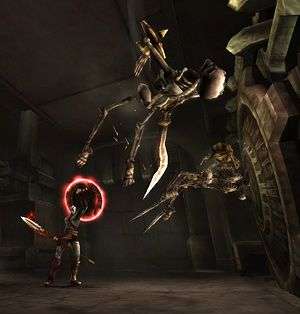 As for sightseeing, we get to set foot in the underwater utopia of Atlantis (originally intended to appear in God Of War II), the otherworldly Domain of Death, and Kratos’ home city of Sparta itself, while the ability to set the Blades of Athena ablaze and the inclusion of a Spartan spear and shield combo attempt to freshen up the series tried and tested combat. Nevertheless, complaints of familiarity were well and truly starting to set in, as Kratos stubbornly refused to do anything other than shred his foes into tiny little pieces. But, much like God Of War III’s technical brilliance on PS3 did much to lull over its lack of new ideas, Ghost Of Sparta’s PSP-pushing performance was such an accomplishment that it almost didn’t matter if it was the same old God Of War. The very fact it was the same old God Of War running on the evermore antiquated PSP was enough reason to celebrate, and as if to reinforce just how spot on Ready At Dawn’s efforts were, both Chains Of Olympus and Ghost Of Sparta received an HD port to PS3 the next year in the God Of War: Origins Collection.
As for sightseeing, we get to set foot in the underwater utopia of Atlantis (originally intended to appear in God Of War II), the otherworldly Domain of Death, and Kratos’ home city of Sparta itself, while the ability to set the Blades of Athena ablaze and the inclusion of a Spartan spear and shield combo attempt to freshen up the series tried and tested combat. Nevertheless, complaints of familiarity were well and truly starting to set in, as Kratos stubbornly refused to do anything other than shred his foes into tiny little pieces. But, much like God Of War III’s technical brilliance on PS3 did much to lull over its lack of new ideas, Ghost Of Sparta’s PSP-pushing performance was such an accomplishment that it almost didn’t matter if it was the same old God Of War. The very fact it was the same old God Of War running on the evermore antiquated PSP was enough reason to celebrate, and as if to reinforce just how spot on Ready At Dawn’s efforts were, both Chains Of Olympus and Ghost Of Sparta received an HD port to PS3 the next year in the God Of War: Origins Collection.
The origins theme was set to continue in 2013’s God Of War: Ascension, Sony Santa Monica’s prequel to the original trilogy. Winding the clock back ten years before the events of the first game, to when Kratos breaks his blood oath with Ares, Ascension sees the Ghost of Sparta pursued relentlessly by the Furies, a trio of freakish sisters who were once noble guardians of honour and enforces of punishment, but now align with the God of War. It’s an interesting set-up, one that presents us with a Kratos who’s yet to be fully consumed with all-encompassing rage – at one point he saves some poor soul from being skewered by a spear – but ultimately one that never fulfils its potential. The plot Ascension’s writers penned spins events in a manner that feels muddled as a standalone story and insignificant within the wider canon. Meanwhile, on the gameplay side, the developers neither expand Kratos’ aging repertoire with any noteworthy new mechanics nor do anything interesting with the existing ones.
Furthermore, Ascension’s rote set-pieces fail to, ahem, ascend the series to new heights. The fact is, in terms of cinematic epicness, games don’t get much bigger than God Of War III, and perhaps by virtue of being a prequel, Ascension was always going to face an uphill struggle. Fixed camera angles that zoom out so far you can’t see what Kratos or, vitally, his enemies are doing only make matters worse, especially with the higher difficulty curve and tweaked parry system which requires you tap another button to counterattack after a successful block. They might show off the game’s scale, but previous God Of Wars understood the time and place for showy camera work is not in the heat of battle.
More problems persist elsewhere. A lack of secondary characters, friend or foe, make a story that already lacks spark more sedate, audio frequently cuts out, and in some not even overcrowded battles it’s hard to get a strike in sometimes. But, for all its faults (and there are plenty), Ascension has its redeeming qualities. Graphically, coming at the end of the PS3’s lifecycle, it’s the best looking God Of War ever, even if the lacking art direction and predominantly beige colour palette mean it’s not necessarily the most eye-catching; QTEs are less dominant, gut-spilling and head-splitting finishers often requiring more active involvement than a timely press of a button; and the game’s penultimate and arguably best act, reassembling the Statue of Apollo, invokes memories of classic God Of War, in particular wandering the deadly corridors and solving the numerous riddles of the original’s Pandora’s Temple, even if the bastard hard Trial of Archimedes can do one (the difficulty of which was toned down via a post-release patch).
Ascension’s biggest and most surprising feature, however, was the series’ first online multiplayer. Certainly, the mode proved such a focal point of the package that Sony Santa Monica showcased only multiplayer footage during the game’s reveal in early 2012, saving Kratos for the following E3. Doubts were expressed, of course, but by all means the finished article was far better than it had any right to be. Players take on the role of an unknown warrior and must pledge their allegiance to Zeus, Poseidon, Ares or Hades, each granting their own powers and abilities, essentially forming the game’s classes, before battling it out in multi-tiered arenas that hark back to games past. Mechanically and thematically it all translates splendidly well for the most part, and moulds a template that Sony Santa Monica and others can build upon in the future.
 Ascension is a game of two halves then, heralding God Of War’s bold and successful first steps into multiplayer bundled with a regressive and uncharacteristically lacklustre campaign. It’s a shame the series so far is left on a bit of a downer, but Kratos has at least done well for himself out of his respective franchise over time. Over the years he’s made plenty of guest appearances, some of which include the Mortal Kombat reboot and indie hit Shovel Knight (the PlayStation versions, natch), while also turning up by mandatory requirement for Sony’s Smash Bros rip-off PlayStation All-Stars Battle Royale.
Ascension is a game of two halves then, heralding God Of War’s bold and successful first steps into multiplayer bundled with a regressive and uncharacteristically lacklustre campaign. It’s a shame the series so far is left on a bit of a downer, but Kratos has at least done well for himself out of his respective franchise over time. Over the years he’s made plenty of guest appearances, some of which include the Mortal Kombat reboot and indie hit Shovel Knight (the PlayStation versions, natch), while also turning up by mandatory requirement for Sony’s Smash Bros rip-off PlayStation All-Stars Battle Royale.
He’s also meant to get the motion picture treatment too, ever since the first game in 2005. Brett Ratner of Rush Hour, Tower Heist and, fittingly, Dwayne “The Rock” Johnson-starring Hercules fame was at one point set to direct, and according to David Jaffe current 007 actor Daniel Craig was sent a script, but turned the part down. Presently, Patrick Melton and Marcus Dunstan, who’ve worked on the Saw franchise, are behind the latest draft of the screenplay, which supposedly aims to humanise Kratos and explore his past. Yet, the film which is said to have a $150m budget has no director or actors currently attached. Surely Guardians Of The Galaxy’s Dave Bautista or the new Mad Max, Tom Hardy, are perfect for the lead role? And – wishful thinking here – if Peter Jackson couldn’t get Microsoft’s Spartan on the big screen, maybe he can Sony’s?
Meanwhile, back in the games industry, Kratos’ influence can be felt much stronger, not least in MercurySteam’s fantastic first Castlevania: Lords Of Shadow, which has God Of War’s imprint all over it. From the giant bosses to the extendable chains of the Combat Cross, MercurySteam owe a huge debt to Sony Santa Monica, and some say they even beat them at their own game. Others have also tried to replicate the same success. Sony attempted a Goddess of War counterpart with Ninja Theory’s Heavenly Sword on PS3 (likely due to the console’s then lack of Kratos), EA tried an equivalent with Visceral Games’ Dante’s Inferno, and Microsoft were probably banking on Crytek’s Xbox One launch title Ryse: Son Of Rome filling their catalogue’s empty hack and slash slot. And finally, who can forget the Quick Time Event. Okay, so God Of War was far from the progenitor of the much derided mechanic, but, with the exception of Resident Evil 4, nobody could claim to do it so well back in the day or since.
So what’s next for God Of War? Well, as part of Kratos’ tenth birthday celebrations, God Of War III is getting one of those fangled remasters for PS4 which, running in 1080p at 60fps, could confidently rival some bespoke current-gen games. Looking to the future, it seems there’s definitely more God Of War on the way. After getting Avalanche Studio’s upcoming Mad Max game off the ground and joining Crystal Dynamics to direct the cutscenes in the Tomb Raider reboot, Cory Barlog returned to Sony Santa Monica in 2013, teasing he was putting together a team to work on something “freaking huge”. Then, at 2014’s PlayStation Experience event, he all but confirmed he was working on a brand new God Of War, revealing it would not be a prequel, and that he hoped to share more details in the next couple of years. Is it God Of War IV, or maybe a reboot? If anything, Ascension proved that you can’t always teach an old God new tricks, and after God Of War III, are there any more Gods, Titans, and mythical creatures left to kill? Could a new God of War in a new mythology be on the cards – perhaps Norse? Either way, God Of War is too huge a franchise for Sony to not continue, and with or without Kratos, you can bet that when it hits it’s going to hit hard.
Last five articles by Tim
- Future Perfect
- A Thief's Alternative End
- Uncharted 4: A Thief’s End - Review
- Ratchet & Clank - Review
- Gears Of War 4 – Multiplayer Beta Impressions














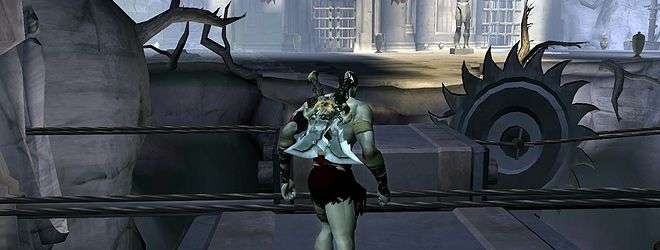

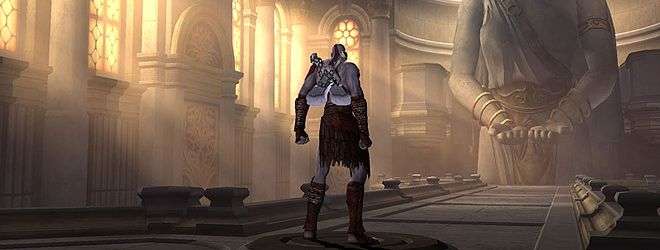

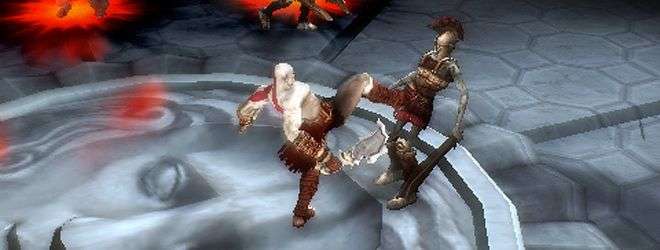
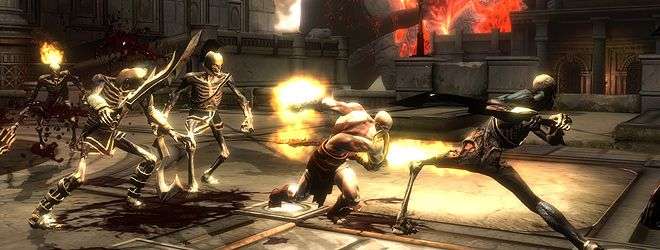
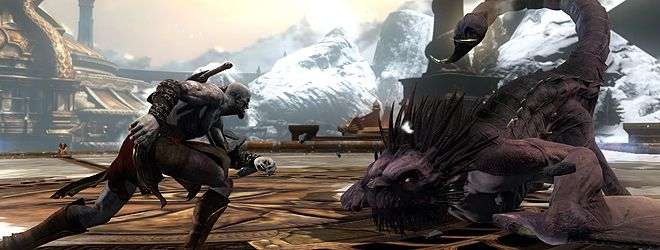
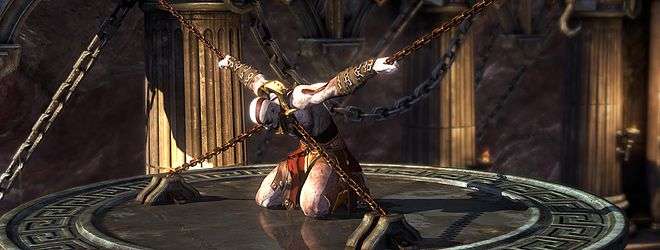





There are no comments, yet.
Why don’t you be the first? Come on, you know you want to!